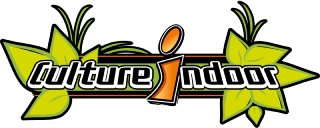PLANT PROTECTION PRODUCTS : FAQ
What is a plant protection product (PPP)?
This term refers specifically to the plant uses of pesticides (agricultural and non-agricultural, such as in gardens or green spaces of municipalities). There are mainly three categories: herbicides (to control weeds), fungicides (to control fungi) and insecticides (to control insects). Other products have an action on rodents (rodenticides), snails and slugs (molluscicides). According to the definition given by the article L.253-1 of the rural code, they also include products containing GMOs whose function is to destroy unwanted species.
What is a MA ?
The Marketing Authorization (MA) is the agreement given to a holder of the exploitation rights of a commercial plant protection product manufactured industrially so that he can market it. Any plant protection product must be distributed under a MA number, which must appear on the product label.
All the MAs granted in France are listed on the site http://e-phy.agriculture.gouv.fr/
What is an SDS ?
The Safety Data Sheet (SDS) is a form containing information about the productis a form containing data related to the properties of a chemical substance.
These sheets are an important element of health and safety for the users of the products and for those who treat their remains, residues, or waste contaminated by these products toxic products and/or dangerous products but also for the caregivers, by informing theemergency (including poison control centers) on the risks related to these products and how to reduce them.
These sheets are widely used to catalog information on chemical products. They should be available wherever a substance is used. In Europethey must be distributed by the manufacturer or the distributor of the product to the customer and in the customer's language.
What are the risks associated with the use of PPPs?
On humans:
Plant protection products are known to scientists since the 1960s for their nuisances on human health. Their exposure increases the risks of neurodegenerative diseases, d'hemopathies and reproductive disorders and several types of cancers (gliomas, sarcomas, prostate canceretc.). These risks are stated by risk phrases on the labels of the products concerned:
-
- H301 Toxic by inhalation
- H302 Harmful if swallowed
- EUH029 Contact with water liberates toxic gases
- H314 Causes severe skin burns and eye damage.
- H315 Causes skin irritation.
- H351 May cause cancer
- H350 May cause cancer
- H340 May cause genetic defects
- H360 May impair fertility or the unborn child
- H361 Suspected of damaging fertility or the fetus
- H362 May be harmful to breast-fed babies.
On the environment:
The risks on the environment are various, they are stated by risk phrases that must be affixed to the labels of the products concerned:
-
- H400 Very toxic to aquatic organisms
- H411 Toxic to aquatic organisms, causes long-term adverse effects.
- H412 Harmful to aquatic organisms, causing long-term adverse effects.
- EUH401 Follow instructions for use to avoid risks to human health and the environment.
- EUH059 Harmful to the ozone layer
To reduce the risks, it is advisable to limit the application of these products (other solutions known as "bio" may exist, see section "Alternative Control") and to protect yourself appropriately (see section "PPE: Personal Protective Equipment").
Are there more or less harmful PPPs?
PPPs are classified by level of danger, pictograms present on the labels of the products give you the indication of the type of danger linked to its use (see the "Good Agricultural Practices" sheet)
The mention EAJ (Authorized Use in Garden) guarantees a less dangerous level.
The UAB label (Usable in Organic Agriculture) guarantees that the active substance used in the product does not present an unacceptable risk for human or animal health, nor for the environment when the product is used under the normal conditions related to its marketing authorization (MA).
What types of PPPs can I use in my garden?
According to the decree of October 6, 2004 on the conditions of authorization and use of the term "authorized use in gardens" for plant protection products amended by the decree of July 26, 2005, the specialties benefiting from the term "Authorized Use in Gardens (EAJ)" are the only products that can be sold to non-professionals (amateur gardeners) and used by them because they present guarantees of lesser danger.
What are the Maximum Residue Limits (MRL) and the Pre-harvest intervals (PHI) ?
MRLs are the maximum regulatory concentrations of active substances that must not be exceeded in foodstuffs. They are defined during the toxicological studies carried out to obtain the MA.
Respecting the prescriptions for the use of a product defined by the MA, particularly with regard to the Pre-Harvest Interval (PHI), allows not to exceed the MRL of this product.
The DAR is the time necessary for the degradation of the phytosanitary product after treatment that must be respected before harvesting. If no ARfD is indicated on the label, the ARfD is 3 days.
Respect the instructions on the label !
COMPANY APPROVED BY THE MINISTRY OF AGRICULTURE FOR THE SALE OF PHYTO-PHARMACEUTICAL PRODUCTS TO NON PROFESSIONAL USERS
Approval number : IF01878
More information on our certified stores


